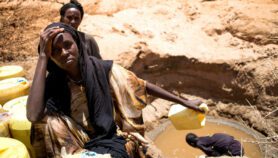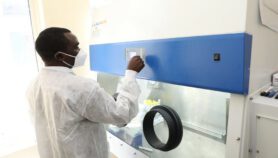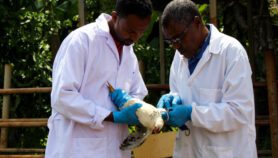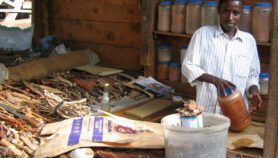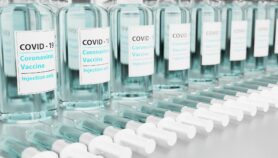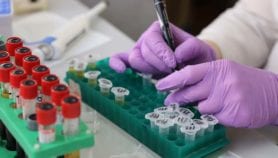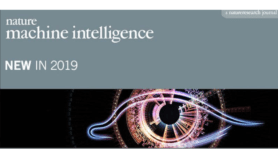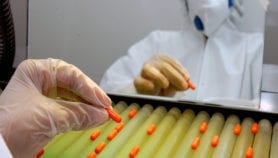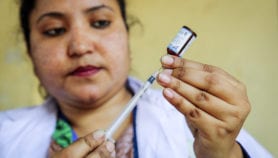By: Yojana Sharma
Send to a friend
The details you provide on this page will not be used to send unsolicited email, and will not be sold to a 3rd party. See privacy policy.
The barriers to mainstream medical approval are great but some traditional treatments are finding new routes to acceptance, finds Yojana Sharma.
When artemisinin, derived from the sweet wormwood plant, was developed into a major anti-malarial drug after years of research and trials, it was seen as the beginning of an era in which promising traditional medicines might lead to mainstream drugs.
But despite the widespread use of indigenous medicines in many countries, few have been able to jump the barriers that artemisinin did and become accepted for international use.
The hurdles are formidable: research can take 10–15 years; trials are prohibitively expensive (and some argue they are incompatible with the methods of traditional medicine) and the approach of international drug companies to the understanding of a drug — at the molecular level — is not easy to emulate.
Even if local people have used a medicine for many years, it usually has to start at the bottom of the research ladder if the goal is international approval.
No shortcuts
Kanglaite, a Chinese herbal extract produced from the mature seeds of the coicis plant — is believed to possess anti-cancer properties. The Chinese State Drug Administration approved it after three years of trials in China, where it is widely used to treat lung and breast cancer.
But kanglaite’s backers had to start almost from scratch again, undertaking expensive phase I clinical trials to demonstrate safety, when they embarked on the long road to coveted approval by the US Food and Drug Administration (FDA).
Another obstacle for small research operations is the level of detail at which candidate drugs are studied.
Bhushan Patwardhan, director of the Interdisciplinary School of Health Sciences at India’s University of Pune, has worked extensively on Ashwagandha (Withania somnifera), a traditional remedy for memory loss and a diuretic, and on Shatavari (Asparagus racemosus) from India’s traditional Ayurvedic system of medicine.
"But research has not been addressing the understanding of the molecules from the drug point of view. That was something that was key in the development of Tamiflu," he observes.
Tamiflu, like artemisinin, is an international success. It is an antiviral drug based on shikimic acid, isolated from Chinese star anise — a widely-used liquorice-flavoured cooking spice also used in traditional Chinese medicine for stomach complaints.

Tamiflu is an antiviral drug based on shikimic acid, isolated from Chinese star anise
Flickr/Whirling Phoenix
Tamiflu went through all the stages of testing and development before it reached pharmacy shelves — and international success. It was developed through a molecular analysis of its active ingredients — the normal way in which pharmaceutical products are developed at an industrial level.
Serious backing required
Such lengthy and in-depth research requirements mean a medicine needs backing from a weighty organisation, whether a determined government or an international company.
"Any medicinal plant is bound to have some activity under scientific investigation. But if you want a blockbuster in pharmaceutical terms," says Patwardhan, "you need a systematic project. The Chinese government provided huge policy support for developing artemisinin."
Attracting the interest of global pharmaceutical companies, the organisations with the resources to make medicines into marketable drugs, is hard.
Patwardhan cites the example of curcumin to show what can happen without coordinated support. Derived from the turmeric root, a key ingredient of curry spice, curcumin was the subject of a much publicised battle by the Indian government to reverse a patent granted to a US University for its use in healing wounds.
India argued curcumin could not be monopolised because it had been used for centuries in traditional medicine — and won.
But although Indian laboratories continue to investigate cucumin, it remains undeveloped as a drug.
"We may come out with several derivatives," says Patwardhan, "but the decision has not been taken by industry to develop it. Unless it is strategised to a higher level, it won’t be developed."
Impossible to evaluate
The constraints facing traditional medicines are not just financial: some treatments are impossible to evaluate with Western methods, argue scientists. For a start, the medicine may be a mixture of ingredients, with no batch containing exactly the same proportions as another.
Justin Wu is part of a team led by Joseph Sun at Hong Kong’s Chinese University. They are conducting trials on a traditional herbal remedy for irritable bowel syndrome, for which Western medicine has no cure.
The remedy uses a combination of up to 20 different herbs.
"Because of the various compositions of different herbs it is difficult for it to be regulated as a drug," says Wu.
"If we want to give it a brand name we need a standard formula and we need to prove its effectiveness scientifically."
Wu would not name the formulation, but added: "The long term goal is that this kind of brand can be marketed worldwide. But if we continue with the current practice of using a compound formula, the likelihood of regulatory acceptance [in the United States] is low."
The shifting relationship between patient and drug is another reason why traditional medicine may not be amenable to Western drug development.
Zhang Xiaorui, WHO coordinator for traditional medicines says: "You cannot use the same approach as with drug development. Traditional medicines depend not only on the product, but also on the practitioner.
New approaches
Some countries are sidestepping international acceptance and focusing instead on getting traditional medicines through nationally designed hoops.
Aiming just for the Chinese market — a huge and valuable one — can also reduce the obstacles, given China’s acceptance of traditional medicines.



Curcumin remains underdeveloped as a drug
Flickr/sophiea
And India’s New Millennium Indian Technology Leadership Initiative programme aims to bring together private firms, national laboratories, and universities to develop new products for India.
India’s Council for Scientific and Industrial Research (CSIR) has already funded a handful of research projects into Ayurvedic medicines.
"It’s not hearsay. There is sound logic behind it and it does not take much time to get medicines from the traditional remedies, but with contemporary safety and quality," Patwardhan says.
South Africa has been rationalising research into traditional remedies, focusing on key diseases to reduce duplication and cut costs.
"We select those that will go through the validation process depending on potential," says Yonah Seleti of the South African Department of Science and Technology.
Some governments are now deciding that widely used traditional medicines from their own countries should need only reduced investigations before national approval.
The European Union has recognised this to some extent. The EU’s new ‘Traditional Use’ directive, which will replace an existing directive next year, will license traditional medicines for sale in Europe if they have been in safe and effective use for 15 years.
Yet not many traditional medicines are expected to clear even that hurdle.
"Africa has an oral tradition. If you want to say: ‘has this drug been used for 15 years?’ you won’t find the documentation," says Nceba Gqaleni, professor of Traditional Medicine at the at the University of KwaZulu-Natal, South Africa.
"How do you convince traditional healers to conduct their own documentary process without them thinking you want to steal their knowledge?"
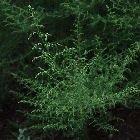


OneWorld Health is seeking a way to scale up synthetic artemisinin production
Flickr/oceandesetoiles
Ways and means
But there are promising new drug development partnerships emerging, with both public and private funding, which might become routes for official acceptance of traditional medicines in Europe and the United States.
These include collaborations between universities, philanthropic organisations (such as the Gates Foundation) and drug management non-profit organisations.
OneWorld Health, the first non-profit drug development company in the United States, is seeking a way to scale up synthetic artemisinin production. The drug’s success has led to a shortage of the raw material, and OneWorld Health will steer a new, synthesised artemisenin through FDA approval.
"In China there is a large integrated planting and harvesting of artemisinin," says Tue Nguyan, head of Research and Clinical Development at OneWorld Health. "But there is wide variation of quality yield, and the impurities that come with it depend on where it comes from, how it is harvested and extracted and purified.
"Our project was to take some genes from the plant and insert them into yeast, grow the yeast to grow the artemisinin acid, and do some chemistry."
A grant from the Gates Foundation has funded taking the laboratory experiment to industrial scale.
"We have been able to make the process large scale so the yield is high enough to make it economical," says Nguyan.
OneWorld Health is also looking at synthesising prostratin, an anti-AIDS compound.
Prostratin comes from the bark of Samoa’s mamala tree (Homalanthus nutans), used by Samoan healers to treat jaundice (hepatitis). OneWorld Health has already signed an agreement with the Samoan government and village elders to give them half the profits of any anti-AIDS drug eventually produced.
Still at the early stages of development, prostratin was licensed by the United States’ National Institute for Health to the non-profit Alliance for AIDS Research, which will manage the pre-clinical research on the way to FDA approval.
"It’s an interesting collection of groups coming together," says James Kirby, a molecular biologist and part of the Oneworld Health team at the University of California, Berkeley.
"There’s a lot to be said for a plant that has been used for a number of years," he adds. "There will be some level of safety or assurance that it is not a toxic compound.
"We can see indigenous use as an informal trial."
Yojana Sharma is a freelance science journalist.


